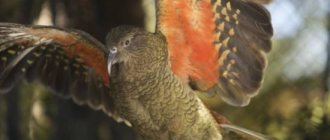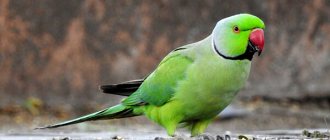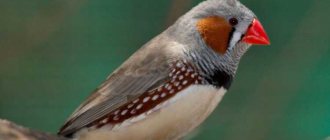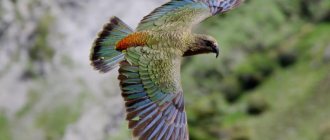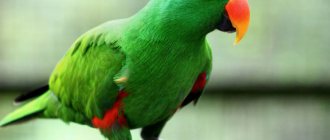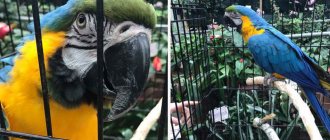Description and features
Passeriformes are the species to which the bird we are considering belongs. Amadina birds in the photo are depicted as bright, very attractive, but even the highest quality photograph is not able to convey all the beauty of these birds. Most of them have unusually beautiful plumage colors: variegated and bright feathers are the reason for the high decorativeness of these birds.
All species of finches have a powerful and strong beak of a small size in the shape of a triangle. And from it to the tail, the length of these birds is no more than 12-14 cm. These pets are quite interesting to watch - they are very nimble, smart and resourceful.
Many bird lovers think that finches are trusting and quickly get used to their owners, but this is not entirely accurate. They get used to home conditions quickly and feel quite comfortable in captivity, but they are not at all happy when a person takes them in their arms. Therefore, it is undesirable to take them out of the cage to take a closer look or “play” - finches do not like such treatment.
And many types of these pets calmly tolerate the absence of humans for a long period of time - the main thing is that they have food in the cage and clean water in the drinking bowl. That is why experts recommend keeping these birds for those who spend most of their time outside the home.
Listen to the voice of the finch
Listen to the voice of a zebra finch
White finches: how to distinguish a male from a female?
If you want to buy such a bird for yourself, then you need to know its habits, and also understand what kind of care it needs. First of all, beginners who are planning to buy birds are interested in two questions: “How do white finches differ from other individuals?”, “How to distinguish a male from a female?” Let's look at this in detail. As we have already mentioned, bright birds have a cocky character, but white finches are absolutely calm and balanced creatures. Therefore, if you dream of an obedient bird, then you should definitely take a white bird.
As for the sex of finches, not everything is so simple. Of course, people want to understand a little about the nuances so as not to be deceived and not buy two females or males. So, determining the sex of brightly colored varieties is much easier. As for white individuals, an inexperienced amateur may make a mistake. To determine the sex, you should pay attention to the beaks of birds. In males they are redder and brighter, while in females they are orange. We should not pay attention to the plumage of birds, since it is white and does not give us any information. The second sign for determining gender can be considered the singing of finches. Females do not sing at all. But the males start pleasant songs. It is worth remembering that male Japanese finches do not sing, but rather whisper. This is how they differ from other representatives of their genus.
Kinds
People at home most often keep only several subspecies of finches, each of which will be discussed in detail below.
Finches Gulda
In natural conditions, these creatures constantly roam, making long flights. Gould's finch bird , in its natural conditions, settles in Australia and has a rather unusual appearance. These birds need high environmental humidity, so their main habitat is tropical forests. And the migration of these birds directly depends on heavy rains.
The color of their plumage is rich and variegated. The abdomen is yellow, the breast is pale purple, the back is covered with green feathers, and the small head is pure black. A ring of blue feathers is clearly visible on the neck. A strong, strong small beak - rich red in color.
The females of this species of finches have practically no maternal instinct, they do not sit on the nest, and after the chicks hatch, they simply abandon them to their fate. Therefore, it is better to choose another variety of these birds as brood hens - Japanese finches.
Rice finches
These are very beautiful looking. Small birds initially lived only on the Indonesian islands, from where they later moved to other countries of the world. When these birds were domesticated, bird lovers from most countries of the world began to actively buy them.
The plumage of rice finches is calmer than that of other species, but they look no less original and beautiful. The main tone of the plumage is rich gray with a bluish tint. The belly is dark yellow, and this color gradually gives way to black at the top of the tail. The lower part of the tail is painted boiling white.
The main color of the plumage of the small head is black, and only the cheeks stand out against this background with two spots of bright white color. The eyes are small, oval-shaped, surrounded by a circular stripe of bright red color, the iris is dark, almost black. A small powerful beak is a rich red color. Breeders developed a purely white breed of birds from representatives of this species.
Japanese finches
This species is not found in natural, that is, natural conditions - the breed was bred artificially. These birds were brought to a number of European countries from the Japanese islands - hence the name of these feathered pets. However, experts believe that this breed was developed in China by crossing a number of closely related varieties of wild birds of this species.
The color of this species is not so rich and bright, mostly brown. But there may be other colors of plumage: white, fawn, and in rare cases even motley.
These birds cannot be kept alone, otherwise they begin to become “sad,” may begin to get sick, and sometimes even die from loneliness. Depending on the size of such pets, from three to ten individuals are planted in one cage.
The main advantage of Japanese finches is their well-developed maternal instinct. Many experts even believe that this breed was specially bred so that female Japanese finches would feed the chicks of other breeds abandoned by their “parents.”
Zebra finches
Australia is the homeland of these incredibly beautiful creatures. From here the birds gradually spread to other continents. Wild representatives of the species can currently be seen not only here, but also in the United States and Portugal. The habitats of these wild birds are moist forests in the tropics.
The upper part of the small head is “colored in a bluish-gray tone. The cheeks are brown with a reddish tint, separated from the white plumage under the eyes by a thin black stripe located strictly vertically. The powerful, strong beak has a fiery red color. The color of the small neck is the same as that of the head.
The feathers on the back have a dark, rich gray tint. The chest is lighter in color, with clearly defined dark stripes. The belly is bright white. The sides are painted a rich brown color, along which specks of white appear. The tail is striped, in black and white. Lovers of domestic finches prefer, in most cases, a variety of these birds.
Where does the zebra finch live?
Photo: Zebra finch in nature
Despite their very beautiful appearance and elegant appearance, zebra finches are very hardy and unpretentious. They prefer to nest on spacious plains with sparse trees, on the edges of large forests and in the Australian bush overgrown with tall bushes.
A prerequisite for nesting of the zebra finch is the presence of water. Birds must have unhindered access to water, and therefore they always settle near a river or small lake. Birds easily withstand huge temperature fluctuations (from +15 to +40), but die almost immediately at temperatures below +10 degrees Celsius. Another prerequisite for a finch to live is a warm climate.
Birds can easily withstand 5-7 days without water, and are able to drink very salty water without harm to health. Living on small islands, zebra finches prefer to settle away from the sea, as strong sea breezes prevent the birds from flying normally. They nest in the depths of the islands, near water sources. Island finches are less hardy than their mainland counterparts, but are also able to live without moisture for several days.
In the 20th century, the birds were brought to California and Portugal, where they took root well and adapted to local weather conditions. In their habits, they do not differ from mainland zebra finches, and have not yet separated into a separate subspecies.
Now you know where the zebra finch lives. Let's see what this bird eats.
Lifestyle and habitat
There is a lot of information about these wonderful creatures. Finches are small birds with unusual plumage colors, various species of which live in Asian and African countries, as well as on the Australian continent.
For example, zebra finches come from Australia, where summers are hot and dry. This climate has developed in these birds the ability to live without a large amount of water for a long period (up to a week). Although this species usually prefers to settle in arid zones in the wild, it can constantly fly from one place to another in search of food.
The habitat of these bird representatives is all of Australia. The beginning of their mass migration from there was facilitated by the development of agriculture and the improvement of the continent, when forests were cut down and gardens, pastures for livestock and fields appeared in their place. If water is very rare in a particular region, then the birds prefer to settle near human habitation.
Interesting! Wild representatives of this breed are distinguished by high endurance and patience.
Watching them, many poultry farmers notice that finches drink little during the day, even if there is too much water in the drinkers. And in conditions of severe drought, weavers survive by drinking salty water. But for other species of birds, such drinking can cause death.
Color of the birds
The colors of finches are a separate topic for discussion. You can even use it to determine the habitat of birds. Those birds that live in temperate latitudes have white, brown and fawn colors. But tropical residents are always dressed in elegant clothes. There are also birds with a bright combination of black, red, green, blue, yellow and purple.
Males of some species are able to change their plumage before the mating season. In any case, the color of males is always brighter than females. This feature was conceived by nature so that the father of the family could lead enemies away from the nest in case of danger. The female, on the contrary, should be as inconspicuous as possible, since she incubates the eggs.
Scientists even say that the color of the feathers on a bird’s head reflects its character. Based on experiments, they concluded that a finch with red feathers on its head will be much more pugnacious and conflict-ridden than its brothers. In general, birds perceive this color as a sign of aggression.
But black-headed individuals are the bravest, they are more curious and inquisitive.
Maintenance and care
The price of a finch bird ranges from 4 to 5 thousand rubles. This price range is determined by the specific type of these birds, and also depends on the place of purchase. buy finch birds in specialized stores or from breeders, with the latter option being preferable.
Keeping a finch bird seems difficult, but objectively it is not so. And you should start by purchasing a cage. It is desirable that it be wide and long enough (at least 0.5 m) - it should accommodate a family of finches consisting of two “parents” and their brood.
For such pets, it is necessary to purchase only square or rectangular cages, and in those that have a rounded top, finches “get lost”, begin to rush around, become restless and experience constant stress. These birds require a lot of air, so the height of the cages must also be high.
Drinking bowls (at least 2-3 pieces) must be installed in their home. There can be only one feeder. Small birch perches are installed in the side walls so that the birds can jump on them during the day.
Bathing containers should also be placed separately, as these pets love to splash in the water. It is advisable to mount the baths on the cage door - in this case, splashes will not fall on the floor or into the feeders.
Caring for finch consists of timely feeding and maintaining cleanliness in the cages. They should be washed with a disinfectant solution once every 7 days to prevent diseases from occurring in the “owners” of the cells.
These birds are gregarious, so it is impossible to put one such individual in a large cage. Finches do not get along with other species of birds, as they are quite warlike and can get into fights with parrots. As a result, both may suffer.
Breeding
Of course, many breeders are interested not only in how to care for finches, but also in the subtleties of their reproduction. This is also worth talking about.
Amadina in the nest
For reference! In total, there are 38 species and over 300 subspecies of finches in the world. But not everyone is kept in cages.
To get offspring, you need to carefully monitor the behavior of a pair of birds. When the male is ready to mate, he actively sings rather pleasant melodies. Immediately before the procedure, the birds spend a lot of time together, jumping from branch to branch, even looking at each other. This means that everything is going fine, you just need to provide them with suitable conditions for nesting.
Nesting, chicks
It takes finches about a week to build a nest. You need to put suitable materials on the floor of the cage - thin dry blades of grass, woolen threads, wool or fluff. Usually everything soft is used.
When the nest is completed, the female begins laying eggs. Every week one white egg with a barely noticeable greenish tint appears. Usually their number ranges from two to seven pieces. It takes only one week to incubate, after which finches chicks appear in the nest.
Newborns do not look very attractive - naked, pink, blind. They even begin to make sounds only on the second or third day.
For reference! The parents incubate the eggs in turns, and at night they sit together comfortably in the nest.
For feeding, parents use semi-digested food, regurgitating it directly into the beaks of the cubs. Amadina chicks begin to fly out of the nest at the age of 19-20 days. But for about another week the male actively continues to feed them - by this time the female may well begin laying a new batch of eggs.
Nutrition
When getting this beautiful pet, you need to take care of creating the right diet for it. The basis of the daily menu should be specially formulated feed for birds, which should consist of:
- oatmeal porridge;
- millet;
- sunflower seeds for canaries;
- meadow seeds, hemp, lettuce and flax.
The norm for such a combined feed for each bird is 1 tsp. The daily menu should also include the following products:
- boiled eggs;
- berries of various types, fresh fruits and vegetables;
- salad;
- fermented milk, for example, low-fat cottage cheese;
- live food
Finches especially need the last ingredient during the laying period and when feeding chicks. Bloodworms and gammarus can be used as such food. In winter, it is imperative to introduce sprouted grains of wheat, rye and other cereals into the diet of these birds.
Also, supplements containing mineral elements are necessarily included in the amadine’s daily menu. They can be purchased at any store that sells pet and bird food. But you can add finely crushed eggshells, chalk, river or sea sand to the food of these birds.
Important! You cannot include fragrant ones in their menu, which affect finches in the same way as opium affects humans. You should not give them vitamin complexes that are intended for parrots. Such drugs can kill birds. For this reason, experts do not recommend housing him with a parrot (of any kind).
From the history…
The white zebra finch was first bred in Sydney in 1921. The plumage of such birds was completely devoid of pigment. However, unlike albinos, these birds had dark eyes, like wild animals. It is very difficult to distinguish a male from a female, only by the color of the beak. In males it is brighter. Young chicks often have gray feathers on their wings and heads before their first molt. Sometimes this effect persists even after the second change of feathers. Maintaining the genetic line of white birds is very difficult. For this purpose, manufacturers are selected, rejecting all colored representatives. The light representatives have one property: there is no luminous pattern around the mouth. This is what distinguishes white zebra finches. Feedback from bird lovers about beautiful white birds confirms their calm and reasonable character.
Conditions for starting a family
Firstly, peace and quiet. In general, remember the birds when you need to clean the cage or feed them. When they are completely left to their own devices, it speeds up the process.
Second, make a place in the cage for a nest. Or rather, provide a convenient place and building material.
A convenient place can be either just a clean corner of the cage, or several cross perches if you want the nest to be higher. The material is hay, twigs, straw, thin silt twigs, in general, everything is the same as for all birds.
Do not give cotton wool under any circumstances!
The female will lay 2 to 6 eggs. Then they will be incubated alternately by both the female and the male for 13 days (plus/minus a couple of days).
20 days after hatching, the chicks will begin to leave the nest, and after about a month the parents stop feeding them. Chicks can be distributed to friends and acquaintances.
Heavy breathing can be heard through the open beak
Is the finch breathing heavily with wheezing and whistling, often opening its beak, sneezing, and has there been discharge from the nostrils and eyes? Most likely she has a cold. In a neglected state, the bird may develop pneumonia (pneumonia).
Colds can be caused by drafts, hypothermia due to low temperatures, or cold water in a bathing or drinking bowl.
At the first signs of illness, heat the finch with a 40-watt lamp. Then drop a solution of 5 milliliters of warm water and 1/5 of a crushed streptocide tablet into her beak. Carry out the procedure two to three times a day until the bird’s health returns to normal. You can use an eighth of a sulfadimezine tablet. In case of strong discharge, wipe the finch’s nostrils three times a day with a cotton pad soaked in furatsilin.
